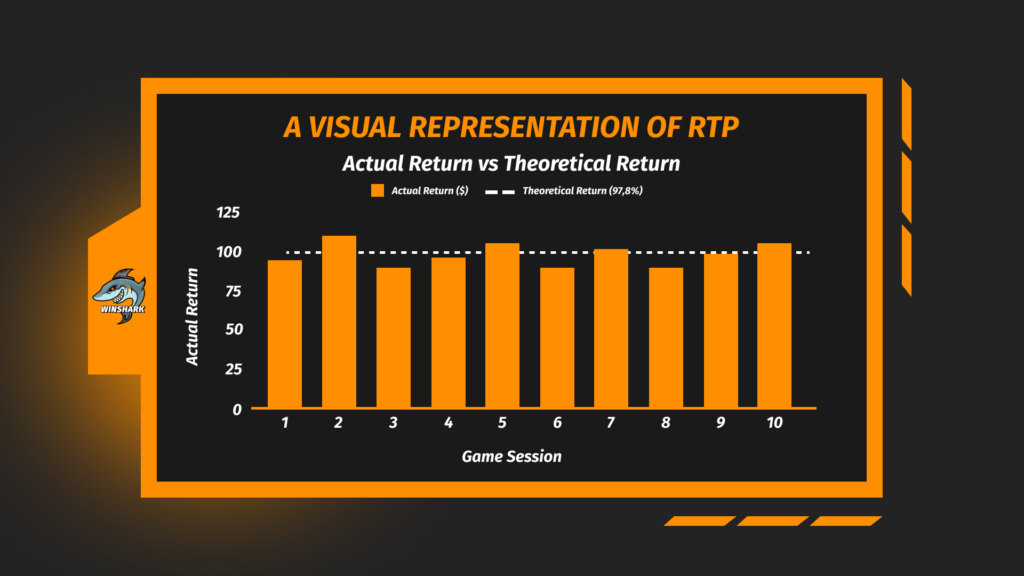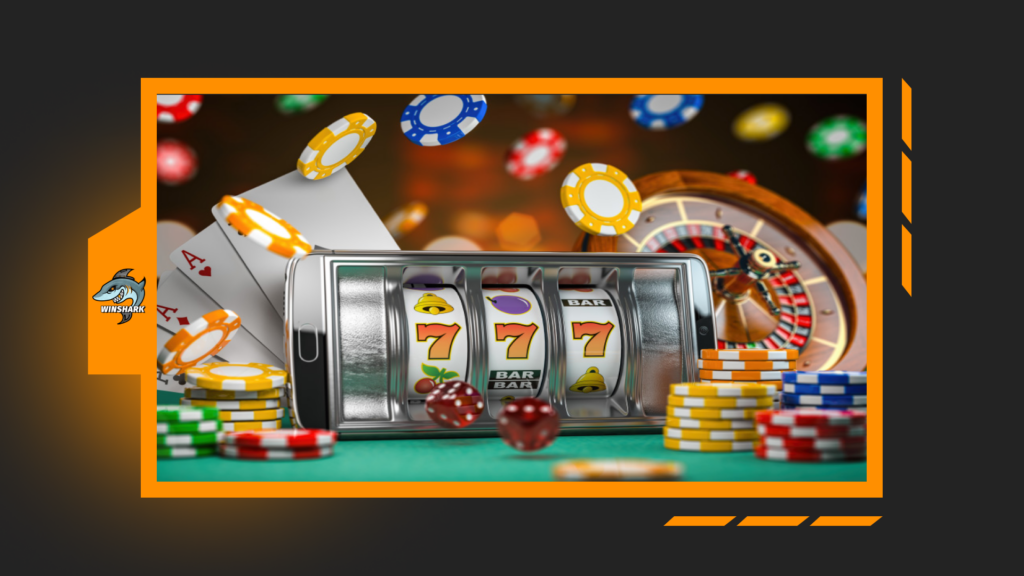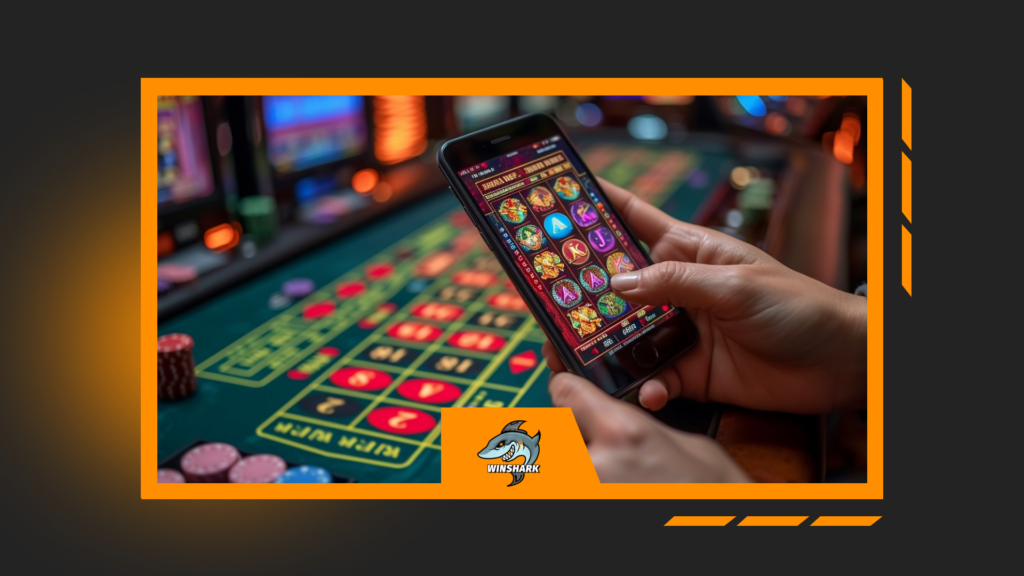Useful information about RTP, for those who play wisely.

In the rapidly expanding world of online casinos, understanding the underlying mechanisms that govern the games you play is essential for maximizing both your enjoyment and potential returns. One of the most crucial concepts to grasp is Return to Player (RTP), a term that frequently surfaces in discussions about slot machines and other casino games. Given measure provides a window into how much of the money wagered on a game is paid back to players over time, offering valuable insights into your potential for winning.

As the online gaming industry continues to grow, more players are seeking ways to enhance their gaming strategies and boost their chances of success. This is where a deep understanding of RTP becomes invaluable. By familiarizing yourself with how it works, you can make more informed decisions about which games to play and how to manage your bankroll effectively. This indicator not only helps in choosing the right games but also plays a significant role in shaping your overall casino experience, balancing the thrill of playing with the realistic expectations of potential returns.
In this comprehensive guide, we will delve into the intricacies of RTP, demystifying what it means for your gameplay. We will explore how this indicator is calculated, the differences between high and low RTP games, and how these percentages translate into real-world gaming outcomes. Additionally, we will discuss the probability of winning in slot machines, shedding light on how often you can expect to win and the types of returns you might see on your deposits.
What is RTP in Slots?

Return to Player is a fundamental metric used in the gaming industry to measure the expected percentage of wagered money that a slot machine will pay back to players over time. This concept is pivotal for players who want to understand their chances of winning and the potential profitability of a game. Simply put, this is an indicator of how much of the total stakes a slot machine is programmed to return to players over an extended period of play. For example, if a slot machine has an RTP of 95%, it means that, on average, for every $100 wagered, the game will return $95 to players in the form of winnings, with the remaining $5 representing the house edge.

Given figure is calculated over a long period and a vast number of plays, which means individual gaming sessions may vary significantly from this average. High RTP percentages are generally more favorable to players, but it’s important to understand that it does not guarantee specific results in the short term.
This metric is a critical factor that can significantly influence a player’s choice of slot games. High RTP percentages are generally more attractive to players because they suggest a higher likelihood of receiving returns on their bets over time. However, it is only one piece of the puzzle. Players should also consider other aspects such as game volatility, theme, and bonus features when selecting a slot game. High RTP games are typically designed to offer a balance of smaller, more frequent payouts and occasional larger wins, making them appealing for players who prefer steady gameplay with reasonable winning chances.

How is RTP Calculated?
Calculating Return to Player is a meticulous process that involves extensive statistical analysis and rigorous testing to ensure accuracy and fairness. This value represents the percentage of all wagered money that a slot machine or casino game is expected to return to players over an extended period. This percentage is derived from the theoretical model designed by the game developers and verified through actual gameplay data.

The process begins with the creation of a mathematical model that defines the game’s payout structure. This model includes various elements such as the game’s paytable, the probability of hitting winning combinations, and the frequency and value of bonus features. Developers use complex algorithms to simulate millions of spins or game rounds, ensuring that the results reflect long-term averages rather than short-term fluctuations.
Theoretical RTP: This is the value determined during the game’s development phase. It is based on the mathematical model that incorporates all possible outcomes and their probabilities. Developers simulate countless spins to ensure the theoretical value is accurate. This figure is crucial as it gives players an idea of what to expect over extended play sessions.

Actual RTP: Once the game is live, the actual RTP can be observed from real-world gameplay data. While it should closely match the theoretical one, short-term deviations are normal due to the random nature of the game. Regular audits by independent testing agencies ensure that the actual value remains consistent with the theoretical value, maintaining the game’s integrity.

To illustrate, consider a slot machine with a theoretical RTP of 96%. This means that, over a significant number of spins, the game is expected to return $96 for every $100 wagered. However, in the short term, a player might experience outcomes that deviate significantly from this average, either winning more or less than the expected return.
Factors Affecting RTP Calculation:
- Paytable Design: The paytable outlines the payouts for different winning combinations. The distribution and frequency of these payouts play a crucial role in determining the RTP.
- Bonus Features: Features such as free spins, multipliers, and bonus rounds can significantly impact this value. The likelihood and potential payouts of these features are incorporated into the RTP calculation.
- Game Volatility: Also known as variance, volatility describes the risk level of the game. High volatility games may offer larger payouts but less frequently, while low volatility games provide smaller, more frequent wins. The volatility affects how the RTP is realized over time.
Probability of Winning in Slot Machines

Slot machines are designed to be games of chance, and the probability of winning can vary widely depending on several factors, including the RTP and the game’s volatility. Volatility refers to the risk level associated with a particular slot game. High volatility slots may pay out larger winnings but less frequently, while low volatility slots offer more frequent but smaller wins.
– High RTP Slots: Games with a high RTP (96% and above) offer better long-term returns to players, but this does not necessarily mean higher chances of hitting a jackpot. These slots tend to have a balanced approach, combining smaller frequent wins with occasional larger payouts.
– Low RTP Slots: These games, with RTPs below 95%, generally provide less favorable returns to players. They might be designed to offer big jackpots, making them more appealing to those chasing large wins despite lower chances of regular payouts.
Understanding the probability of winning also involves recognizing the role of random number generators (RNGs), which ensure that each spin is independent of the last, maintaining fairness and unpredictability.
How Much of Players’ Deposited Funds are Returned as Winnings?

The percentage of deposited funds returned to players as winnings can be directly linked to the RTP of the slot games they play. However, it is essential to acknowledge that Return to Player is a theoretical measure based on extensive play, and individual experiences can vary greatly.
For instance:
– A slot with an RTP of 97% theoretically returns $97 for every $100 deposited, but this is an average over millions of spins.
– Player A might deposit $100 and win $500, while Player B might deposit the same amount and win nothing.
Detailed Breakdown of RTP in Different Casino Games

While this article focuses primarily on slot machines, RTP ratio applies to a variety of casino games. Here is a brief look at how this measure works across different types of casino games:
Online Slots
- Classic Slots: These typically have a higher RTP ratio, often around 95% to 98%, offering a steady return over time.
- Video Slots: With their diverse themes and features, video slots can vary, with ratios usually ranging from 92% to 97%.
- Progressive Jackpot Slots: These have lower ratios, generally between 88% and 93%, because a portion of each bet contributes to the jackpot pool.
Table Games
- Blackjack: Known for its high RTP, blackjack can offer ratios as high as 99.5% when played with optimal strategy.
- Roulette: European roulette has an RTP of around 97.3%, while American roulette is lower at approximately 94.7%.
- Baccarat: With an RTP ranging from 98.94% on banker bets to 98.76% on player bets, baccarat is another high-return game.
Video Poker
Video poker games typically have ratio ranging from 95% to 99%, making them one of the more favorable options for players looking to maximize their returns.
Specialty Games
- Keno: A lottery-style game with variable ratio, often ranging from 75% to 80%.
- Scratch Cards: These instant-win games usually offer ratios between 85% and 95%.
The Importance of RTP Transparency
Transparency in Return to Player is vital for maintaining trust between players and online casinos. Reputable casinos provide clear information about the RTP of each game, allowing players to make informed decisions. Regulatory bodies often require this transparency to ensure fair play and protect players.
RTP and Game Design
Game developers design slots with specific Return to Player values in mind, balancing the potential returns with engaging gameplay. Factors influencing game design include:
1. Theme and Aesthetics: Engaging themes and visually appealing graphics attract players, while RTP ensures a fair return.
2. Bonus Features: Free spins, multipliers, and bonus rounds can enhance the RTP, offering players additional chances to win.
3. Paylines and Bet Sizes: The number of paylines and bet sizes available can affect the RTP, providing flexibility for players with different budgets.
Strategies to Maximize Your Returns

While Return to Player provides a theoretical framework for understanding potential returns, players can adopt certain strategies to enhance their gaming experience and potentially increase their chances of winning:
1. Choose High RTP Games: Prioritize slot machines and other casino games with higher percentages. High RTP games offer better long-term returns, making them a smarter choice for players looking to maximize their chances of winning.
2. Manage Your Bankroll: Set a budget for your gaming sessions and stick to it. This helps in mitigating losses and prolonging your playtime. Proper bankroll management ensures that you can enjoy the gaming experience without the risk of significant financial loss.
3. Understand Game Mechanics: Familiarize yourself with the rules, paytables, and features of the games you play. Knowledge can often translate into better decision-making. By understanding the intricacies of each game, you can develop strategies that align with the game’s design.
4. Take Advantage of Bonuses: Online casinos often offer bonuses and promotions that can provide extra funds to play with, increasing your chances of hitting a win without additional risk to your own money. Utilize these bonuses effectively to enhance your gameplay.
5. Play for Fun: Ultimately, gambling should be viewed as a form of entertainment. Set realistic expectations and enjoy the experience without focusing solely on winning. Playing for enjoyment rather than profit can lead to a more satisfying and less stressful experience.
Common Misconceptions About RTP

There are several misconceptions about Reurn to Player that players should be aware of:
1. This Metric is Not a Guarantee: Given value is a long-term average, not a guarantee of immediate returns. Players should not expect to receive the exact RTP value in a single session.
2. Higher RTP Does Not Mean Higher Wins: While higher RTP games offer better long-term returns, they do not necessarily result in higher individual wins. The volatility of the game also plays a significant role.
3. All Slots are Random: Regardless of RTP, slot machines operate on RNGs, ensuring that each spin is independent and random. No strategy can influence the outcome of individual spins.
The Role of RTP in Online Casino Regulation

RTP plays a crucial role in the regulation of online casinos. Regulatory bodies in various jurisdictions set standards for this indicator to ensure fair play and protect players. These regulations require casinos to:
– Disclose Information: Casinos must provide clear and accurate Return to Player information for each game.
– Undergo Regular Audits: Independent testing agencies regularly audit casino games to verify RTP accuracy and ensure fair play.
– Maintain Compliance: Casinos must comply with regulatory standards to retain their licenses and operate legally.
Choosing the Right Online Casino

When selecting an online casino, consider the following factors to ensure a safe and enjoyable gaming experience:
1. Licensing and Regulation: Choose casinos licensed by reputable regulatory bodies. This ensures that the casino operates fairly and transparently.
2. Game Selection: Look for a wide variety of games with high RTP values. A diverse game selection enhances your gaming experience.
3. Bonuses and Promotions: Opt for casinos that offer generous bonuses and promotions. These can provide additional value and enhance your chances of winning.
4. Customer Support: Reliable customer support is essential for resolving any issues that may arise. Choose casinos with responsive and helpful support teams.
5. Payment Methods: Ensure the casino offers secure and convenient payment options. This allows for smooth and safe transactions.
Conclusion

Return to Player is a fundamental concept in the world of online casinos, providing insight into the potential returns from slot machines and other games. While RTP percentages offer a theoretical understanding of winnings over time, individual experiences can vary. By choosing high RTP games, managing your bankroll, and adopting smart gaming strategies, you can enhance your casino experience and enjoy the thrill of the game responsibly.
Understanding this indicator and its implications can empower you to make more informed decisions, maximizing both your enjoyment and your potential returns in the dynamic world of online casinos. Whether you’re a seasoned player or a newcomer, keeping this metric in mind will help you navigate the casino landscape with confidence.

 Slots
Slots Popular
Popular How To Play
How To Play


Comments
Be the first to leave a comment!